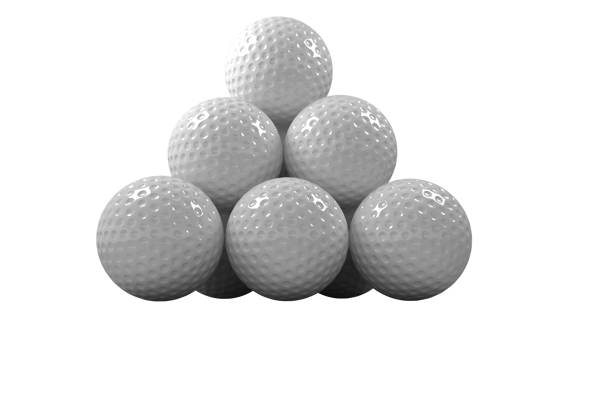Understanding Golf Ball Compression: A Guide for Optimal Performance on the Course
As a leading golf equipment retailer, we understand the importance of choosing the right golf ball to enhance your performance on the course. In this guide, we will explore the concept of golf ball compression, its impact on ball flight and performance, and how it relates to the golf balls you choose. Whether you’re a seasoned golfer or a beginner, understanding golf ball compression will help you make informed decisions and maximize your golfing experience.

Importance of Understanding Golf Ball Compression for Golfers
Golf ball compression plays a pivotal role in a golfer’s game. It affects various aspects of ball flight, including distance, accuracy, spin, and feel. By understanding golf ball compression, golfers can select the right ball that complements their swing speed, skill level, and personal preferences. The proper compression can lead to better overall performance, improved shot consistency, and increased confidence on the course.
What is Golf Ball Compression?
Golf ball compression refers to the measurement of how tightly a golf ball is constructed. It is typically represented by a numerical value, indicating the ball’s ability to deform upon impact. A higher compression ball is firmer and offers less deformation at impact, while a lower compression ball is softer and deforms more upon impact.
How Compression Affects Ball Flight and Performance
Compression directly influences ball flight and performance. Higher compression balls tend to produce a lower trajectory, less spin, and more distance. They are suitable for players with higher swing speeds, enabling them to maximize their power and control. Conversely, lower compression balls generate higher launch angles, more spin, and enhanced feel and control. They are typically preferred by golfers with slower swing speeds or those seeking greater playability around the greens.
Factors Affecting Compression
Several factors influence golf ball compression. Core materials, construction, and cover materials all play significant roles. The core, the innermost layer of the ball, can be made from a variety of materials, such as rubber or resin. Construction, including layering and design, can also affect compression. Additionally, the cover material, such as urethane or surlyn, impacts the feel and durability of the ball.

Impact of Swing Speed and Player Skill Level
Swing speed and skill level are vital considerations when selecting the appropriate compression. Golfers with higher swing speeds generally benefit from using high-compression golf balls, as they can maximize distance and control. Conversely, golfers with slower swing speeds may find low-compression balls more forgiving, allowing for increased launch and greater control.
Overview of the Compression Rating Scale
The compression rating scale provides a standardized way to compare different golf balls. Typically, compression ratings fall into three categories:
- low compression (below 70)
- mid-compression (70-90)
- and high compression (90 and above)
It’s important to note that compression ratings alone do not determine a golf ball’s quality or performance; they are simply a guideline to help golfers find a ball that suits their swing characteristics.

High-Compression Golf Balls
High-compression golf balls offer specific benefits for certain golfers. These balls provide increased distance and are less affected by wind due to their lower spin rates. Golfers with higher swing speeds who have greater control over their shots can benefit from the performance characteristics of high-compression balls. They offer a firmer feel and may be more suitable for experienced players seeking longer distances and a penetrating ball flight.
Low-Compression Golf Balls
Low-compression golf balls are designed to offer increased feel, control, and playability for golfers with slower swing speeds. These balls compress more upon impact, providing higher launch angles, more spin, and increased stopping power on the greens.
Final Thoughts
Understanding golf ball compression is crucial for golfers aiming to optimize their performance on the course. Compression directly affects ball flight, distance, spin, and feel. By considering factors such as swing speed, skill level, and personal preferences, golfers can select the appropriate compression for their game. While high-compression balls offer greater distance and control for faster swing speeds, low-compression balls provide increased playability and feel for slower swing speeds. Ultimately, the right compression choice can enhance overall performance and confidence, leading to a more enjoyable golfing experience.
Before You Go!
We have many years of great golf articles here! So don’t go away without check a few of them out. We have something for everyone. Guaranteed! Sorta. Play Like a Pro with The Hot-Z Golf 3.5 Cart Bag! Have you ever wanted to own your own golf course? Tell us all about it here: Reimagining Golf: If You Owned a Golf Course! Looking for some new golf threads for the summer? Then we have you covered here: Summer 2023: Latest Trends & Tips For Choosing The Perfect Golf Apparel!
Happy golfing!







Pingback: Facts About Titleist: Uncovering 14 Lesser-Known FAQs
Pingback: Inside Callaway Golf: Uncovering the Brand's Success Story
Pingback: Lowering Your Golf Handicap: The Roadmap to Golfing Excellence - Golf Blog | RockBottomGolf.com